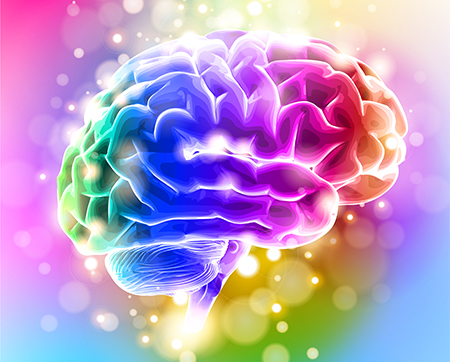 A blast from the past…
A blast from the past…
Even though you know the past is in the past… whoosh! There you are again.
Too quickly, you feel transported back in time in your body. It’s sudden and unpredictable.
The rush of fear overtakes you. Anger. Rage. Loneliness. Guilt. Shame.
Reminders are rough.
Your dog’s incessant barking reminds you of your dad barking at you when you were a teen.
You drive past the semi-truck with white knuckles, just like the one that drove you off the road years ago. Images flash. Your stomach is in your throat.
A nagging boss filters in those nasty messages from your childhood that you weren’t good enough.
Sometimes, you know why you were triggered, and sometimes you have no clue what set you off.
 Life is harder than it should be.
Life is harder than it should be.
Focus and energy are abysmal. You vacillate between brain fog and looping in fear of making a mistake.
You keep missing the mark with parenting. You either make the same mistakes your parents did or overcompensate to the other extreme.
Relationships are suffering. You cover up your emotions or avoid connecting altogether. Showing up as who you are is clouded by all you’ve been through.
If only you could sleep, it would take the edge off everything else.
Move toward the light.
Deep inside, there’s always been a light that lets you know things can be better.
A kernel of truth that all the bad memories could be just that – bad experiences, without all the rest of the crap that comes with them.
You can see yourself walking through life with a sense of ease and calm, astounded at how your days feel easier, bolder, and brighter.
EMDR and Brainspotting are effective methods that can pull you out of the dark.
EMDR
 What is EMDR?
What is EMDR?
EMDR (Eye Movement Desensitization and Reprocessing) is an approach used to treat symptoms associated with distressing and overwhelming experiences (traumas). Completion of EMDR occurs in phases that are fluid and flexible.
How is EMDR helpful?
When given the right support and guidance, brains can recover from traumatic events. Stress responses are part of all nervous systems’ natural defensive instincts.
Sometimes, distress remains after the events pass. EMDR can assist in helping the brain process and let go of these experiences to allow healing to resume. Although an individual will remember the events, their intense sensations and emotions become resolved.
 The phases of EMDR include:
The phases of EMDR include:
Phase 1: Resourcing – In the initial EMDR phase, you strengthen and practice internal resources and coping strategies, including grounding, imagery, or creating a container to tuck distressing memories away. Time to develop resources allows the brain to have predictable calming anchors to support memory reprocessing.
Phase 2: Reprocessing – One of the benefits of EMDR is that clients don’t need to discuss in detail what happened. Instead, through mindfulness, they receive guidance to focus on only one aspect of their experience at a time (emotion, sensation, image, etc.). At the same time, bilateral stimulation helps calm the brain and integrate the left brain with the emotional right side of the brain. This process allows the trauma centers of the brain to work through and let go of the memory from a calm state.
What is bilateral stimulation? Bilateral stimulation with EMDR was traditionally done by having clients follow the therapist’s fingers moving back and forth with their eyes. However, as you can imagine, the therapist’s arms become fatigued. Luckily, bilateral tappers or a light bar work just as well. Bilateral tappers are tiny paddles clients hold in each hand, giving off a calming buzz back and forth between hands, set at a pace that feels calming. The light bar guides the client’s gaze back and forth.
Phase 3: Maintenance – In this phase, positive beliefs are integrated and savored to build them into everyday life.
Brainspotting
 What is Brainspotting?
What is Brainspotting?
David Grand, PhD, discovered the method in 2003 when working with a 16-year-old figure skater. While doing EMDR with some material that had yet to resolve, David noticed her eyes wobble at a particular spot when moving his fingers back and forth (as in EMDR). He became curious and asked if she was open to holding her gaze on his fingers on that spot. She was also curious and new and meaningful processing emerged.
David quickly realized that the processing is broad when a client gazes at a particular spot where the activation is biggest and induces the most physical reflexes. He discovered other ways with his clients to locate these reflexive spots together. This developed into the Brainspotting model we use today.
A Brainspotting session can cover multiple memories in one session, guided by the therapist, who gently tracks the client’s nervous system as the processing unfolds. Like in EMDR, letting go of memories doesn’t require sharing details. Instead of using bilateral stimulation, clients hold their gaze in a particular spot or between spots while processing.
Brainspotting occurs in several steps. First, the therapist and client identify a Brainspot where trauma activation feels the strongest. Then, the therapist guides the client to mindfully notice what happens in their body as they focus on that spot.
This processing unfolds naturally as the therapist supports the client to continue gazing on that spot. The trauma releases, physically and emotionally, leading to a reduction of the initial activation and healing from the original wounds to take place.
 Treating trauma has many approaches.
Treating trauma has many approaches.
You might ask, “How do you determine whether to use Brainspotting or EMDR?” My preference is Brainspotting without a doubt. I find it works more quickly and broadly. If you’ve had a positive experience already with EMDR, I often suggest trying out Brainspotting to see what you think. It’s very similar and allows for a more organic processing to unfold.
“Do you use Brainspotting with all clients?” Most of my clients do Brainspotting in every session. Some schedule a handful of sessions and others continue with ongoing sessions to further their healing. Neurofeedback or practicing stabilizing and calming strategies are added as appropriate.
My goal is to help you overcome all the ways chronic anxiety and trauma limit you.
Brainspotting and EMDR have the power to give you your life back or live fully for the first time.
Build a sense of peace with new understanding and meaning in a space that supports your healing journey.
Don’t hesitate to contact me if you have further questions concerning Brainspotting or EMDR. Complete the contact form today, or send me an email.

